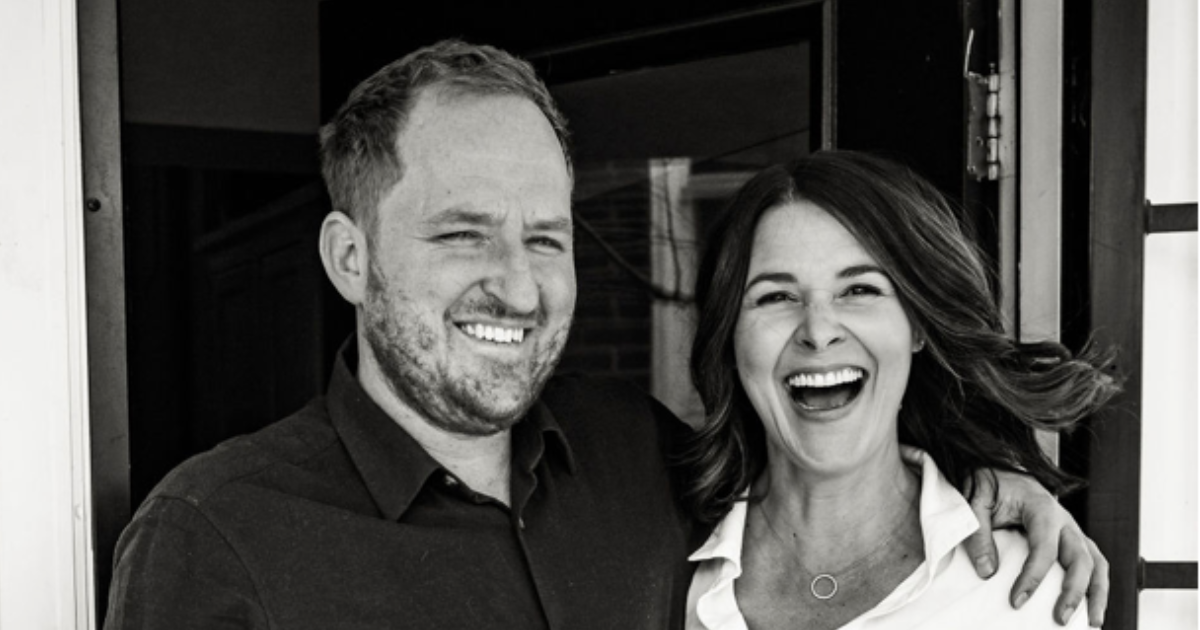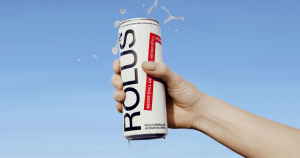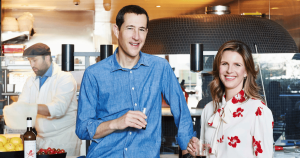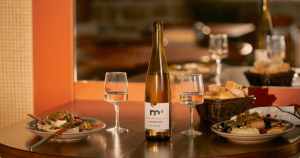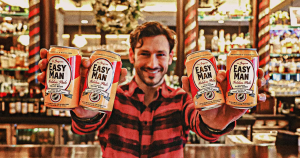Partner Content: Fable
In Colorado, Benjamin Kennedy witnessed firsthand the social divide between alcohol drinkers and cannabis consumers, even post legalization. This observation sparked the idea to create a credible, sophisticated THC beverage as an alternative to alcohol—a drink that would bridge the gap between these two worlds.
The journey to develop Fable wasn’t easy. Benjamin and his team were early movers in the cannabis beverage industry, facing skepticism and numerous challenges along the way. From perfecting a formulation that mimics the complexity and burn of alcohol to navigating the evolving landscape of consumer expectations, Fable has been a labor of love and innovation. In this interview, Benjamin shares his inspiration for Fable, his unique formulation approach, and his vision for a future social drinking landscape where cannabis and alcohol coexist.
Dry Atlas: What about your background drove your interest in the infused beverage space and the development of Fable?
Benjamin Kennedy: It’s twofold. Professionally, I had a front row seat to how the biggest CPG brands were built. Frustratingly, I was always helping to build other people’s brands. I had never tested whether I could really do it for myself.
On a personal level, my wife and I had a front row seat to legalization here in Colorado. Going back to 2016, we observed an interesting social tension between those who drank alcohol and those who consumed cannabis. It often meant that the people who consumed cannabis had to go down to the bottom of the garden and hide behind a bush. We set out to build a credible, adult beverage as an alternative to alcohol. In those early days, people thought we were crazy. But we still saw an opportunity to solve this tension.
DA: You were quite early. In the past 12 to 18 months, we’ve seen a boom in the infused beverage space. What would you say sets Fable apart in this landscape?
BK: We started by interrogating the characteristics of what makes an alcoholic drink an alcoholic drink. That’s complexity, flavor arc, viscosity, mouthfeel, bite, burn. It was critical that we nailed that burn, because we wanted to deliver an experience akin to an alcoholic beverage. We use Szechuan pepper because it touches a nerve at the top of your throat and creates that burn. That’s important if you’re saying, “Hey, drink this like alcohol. Don’t slam it like a soda.”
That took a long time because we were using real ingredients. Back then, nobody had put Szechuan pepper with an emulsion before. Nobody had put real blackberry juice with an emulsion before. We had to go through this complex shelf stability testing to see how the emulsion interacted with the pH of ingredients and so forth. Fable is a considered formulation.
DA: And how did you go about choosing your flavor profiles?
BK: It would have been simpler for us to make an alcohol imitation product. Along the way, we were advised to make a Moscow Mule or an Old Fashioned. But we would have been so wide off the mark. Ultimately, you risk misrepresenting the experience to the consumer. It’s not going to taste exactly like an Old Fashioned. We see that happening in non-alcoholic wine, too.
DA: You raise a great point from a marketing perspective. It might be easy to communicate, “Here’s a non-alcoholic daiquiri.” At that point, though, you’ve established a high expectation in the consumer’s mind.
BK: Exactly. But we have a different challenge.
Fable is a fable—something completely made up. People ask, “What does Into the Woods taste like?” It’s difficult to explain our novel flavors to consumers. There’s nothing to compare them to. People know what an infused margarita is. Now, it may not taste like a margarita when they open it, but there is something to be said for knowing. Our consumers don’t know until they try.
DA: Will you share more about your challenges with launching Fable? Would you say they were more on the formulation side, or was it about reaching the right consumers and setting the right expectations?
BK: The answer is any cool measure of both.
The technical side of Fable was really hard. That took two years. Then, there was a pandemic thrown in the mix, and all the production snags that come with that.
On the consumer side, we were a bit too early, in a sense. The seltzer wave hadn’t even broken. Once it did, the path of least resistance would have been water, natural flavor, emulsion, and pick a sweetener. When you’re dealing with something more complex than an infused seltzer, there are many unknowns. Consumers don’t immediately understand what Fable is. “What is this going to do to me?” We need to educate them a bit, and we’re certainly here to do that.
DA: For our readers who are already receptive to novel taste profiles, but maybe less familiar with cannabis, what can they expect?
BK: Baked into the very development of Fable was the notion that we want people to sip it. In my mind, my ideal consumer was my wife, my mom and dad, right? They were not necessarily cannabis users. They were curious, but they weren’t cannabis users. So slowing down the consumption of the drink is important. Making the drink dry, making it peppery. That’s intentional to give people a chance to feel it.
Ultimately, we say that one Fable is like one large glass of wine. There are 5mg of hemp-derived THC in a can of Fable. We’ve always included 3mg of CBD for what’s called the “entourage effect.” Those two work better together for a more chill experience. It’s going to make you feel more relaxed.
DA: As more curious consumers come into the fold, how do you think the cannabis beverage category will evolve?
BK: I don’t know why the first iteration of this industry was kids’ food—gummy bears and the like.
I’m happy that the next iteration became drinks. But it’s important to distinguish between types of drinks. Some people say to us, “No way. I tried a drink like this and it knocked me out.” Some of these drinks and syrups have up to 100mg of THC. We’re trying to embrace 5:30 PM onwards with a low-dose cocktail alternative. It’s a completely different experience.
DA: Do you think the next phase will be a more nuanced understanding these beverages as an alcohol alternative?
BK: We’re either going to disrupt alcohol, or we’re going to build a sub-sector.
There’s a difference between using an ingredient that disrupts alcohol, and building a brand that disrupts alcohol. The latter is saying, “We’re coming after wine, we’re coming after cocktails, with an ingredient that also makes you tipsy.” That’s the way we’re playing it. The language we’re using, the packaging, and the infrastructure behind the brand are as familiar as possible to an alcoholic brand.
That’s different from building a sub-sector that goes the way of other functional categories that really are defined first and foremost by the functional ingredient. They have cannabis leaves on the can and names like “Wake and Bake.” We’re more focused on disrupting alcohol than building a hemp drink. That’s why we’re so proud to have gotten into the Aspen Food & Wine Classic.
DA: As you think about the future of social drinking, do you envision that the word “drinking” could encompass both alcohol and cannabis?
BK: First, the infrastructure has to be there. I firmly believe that we have a three-tier system capable of handling cannabis beverages just as they’ve handled alcoholic beverages. Nobody in America can argue against that. In that regard, we’re already seeing Big Alcohol pay attention.
Second, we’re all seeing the decline in alcohol sales. Take the state of the craft beer industry. It’s really distressed. And look at the big holding groups. Their stocks are down because spirit consumption is dropping. The generation coming out of college prefers cannabis to alcohol.
So, the infrastructure exists. The macro data is there. I’m very bullish.


